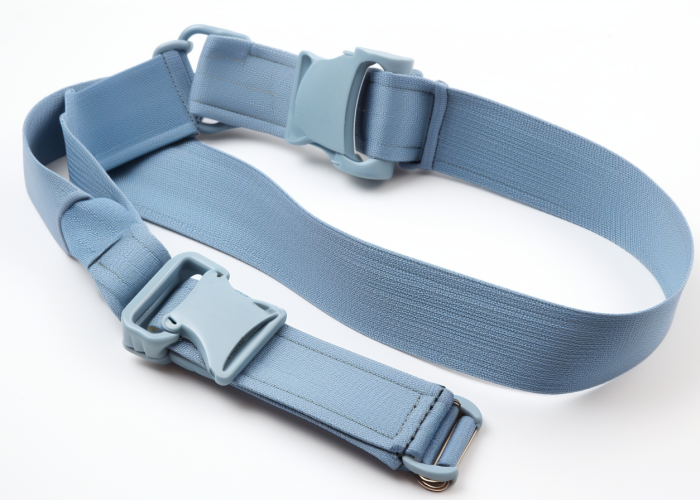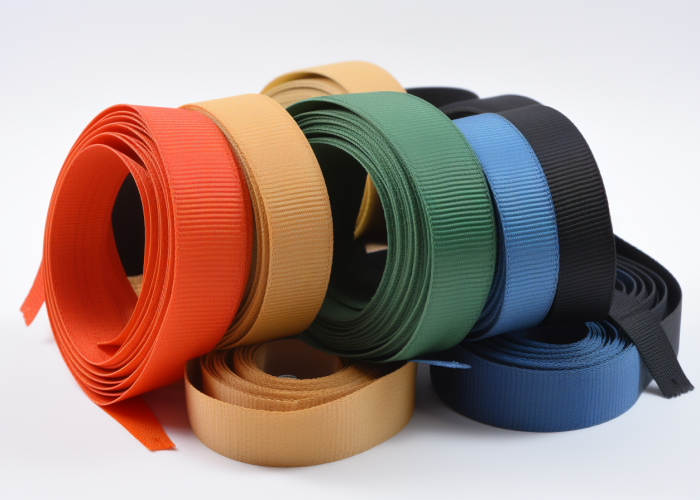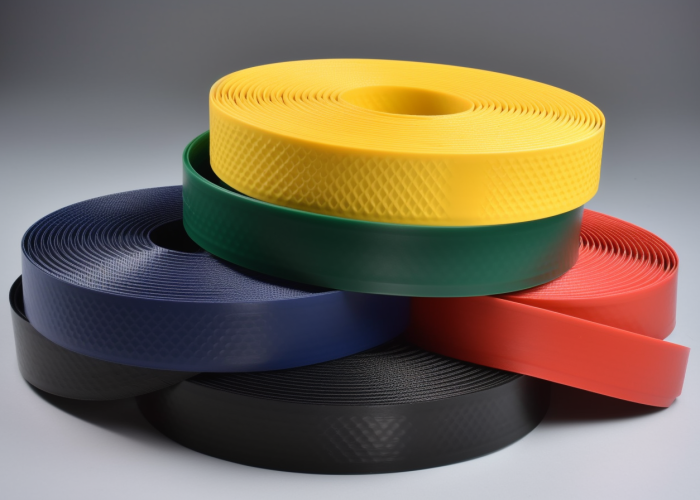Connecting multiple anchor points while maintaining even load distribution presents a critical engineering challenge in lifting and safety applications. Engineers need connection solutions that eliminate uneven stress, prevent failures, and simplify rigging requirements. Our manufacturing capabilities deliver Y body straps precisely engineered to your performance specifications.
Y body straps are specialized webbing connectors that distribute loads evenly between two anchor points and a central connection, with standard configurations supporting 6,000-8,000 pounds. These Y-shaped systems create a self-equalizing mechanical advantage that automatically balances tensions across all connection points, preventing load shifting and stress concentration that causes failure in traditional connectors.
Explore Y body straps’ specs, materials, and performance. Learn how color coding improves safety and boosts efficiency in real-world applications.


Webbing manufacturing expert with 15+ years of experience helping product developers build high-performance straps for industrial, medical, and outdoor use.
Y body straps support 6,000-8,000 pounds in standard configurations and up to 12,000 pounds in reinforced versions through their Y-shaped design with a central pivot connection that distributes load evenly between two anchor points. These straps are manufactured with precise 37-inch (94 cm) half-strap dimensions and a primary section length of 25 inches (63.5 cm), with customization available within ±5% tolerance for specific application requirements.
Key Specifications at a Glance:
Material composition directly determines performance characteristics. Polyester (PES) provides superior UV resistance and minimal stretch (<3% elongation at rated load), maintaining dimensional stability when wet. Polypropylene delivers positive buoyancy and water resistance but degrades fastest in UV environments even with stabilizers, requiring aggressive UV stabilization in tropical zones. Nylon options provide controlled elongation for applications requiring energy absorption or shock mitigation.
The patented Y-junction locking mechanism exceeds ANSI Z359.1 requirements for connector stability, demonstrating zero slippage during 1,000-cycle dynamic loading tests where traditional connections experienced up to 0.5 inches of displacement. This connection maintains 85% of webbing rated strength across the junction – a 27% improvement over conventional webbing splices.
Load capacity scales proportionally with width: 1-inch configurations support working loads of 2,000-3,000 pounds, while 2-inch versions support 4,000-5,000 pound working loads. All configurations comply with relevant industry-specific certifications for lifting applications. When pushed beyond rated capacity, Y body straps exhibit predictable failure characteristics, typically showing visible deformation at 75-80% of breaking strength before catastrophic failure, providing critical visual warning indicators.
Custom specifications available include:
Y body straps maintain consistent tension distribution across all attachment points with less than 5% variance between anchor points even under asymmetrical loading. This performance advantage stems from the central pivot design that automatically equalizes forces across the Y-configuration, preventing the load shifting and premature failure common with traditional multi-point connectors.
Key Performance Characteristics:
Under dynamic loading conditions, Y body straps demonstrate superior energy absorption compared to linear webbing configurations. When subjected to sudden tension spikes, the Y-configuration geometry allows for controlled deformation at the junction point, dissipating energy while maintaining structural integrity. This characteristic makes Y body straps particularly valuable in applications with unpredictable loading patterns or shock absorption requirements.
Testing under asymmetrical loading conditions reveals one of the most significant performance advantages of Y body straps. When force is applied at varying angles or with unequal distribution, the central pivot automatically redistributes tension to prevent overloading at any single attachment point. This self-equalizing property extends service life and increases safety factors in real-world applications where perfectly balanced loading is rarely achieved.
Cyclic fatigue resistance exceeds industry standards, with laboratory testing per ASTM D6775 protocol showing no measurable degradation after 10,000 loading cycles at 50% of rated capacity. This exceptional durability results from the reinforced Y-junction design and specialized stitching pattern that prevents stress concentration at traditionally vulnerable failure points.
While Y body straps offer superior performance in most scenarios, they do require slightly more vertical clearance than simple straight connectors, which may present a design constraint in extremely space-limited applications. This tradeoff is generally outweighed by performance benefits in most engineering applications.

Y body straps work seamlessly with webbing, wire rope, chain, and cable connections without requiring specialized adapters or conversion hardware. This universal compatibility stems from the patented connection system that accommodates various material types while maintaining the core load distribution benefits of the Y-configuration.
Compatible Connection Systems:
The versatile connection system allows direct integration with webbing systems through sewn terminations, reinforced with the proprietary stitching pattern that maintains up to 85% of the base material’s rated strength. For applications requiring metal-to-webbing connections, specialized D-ring terminals distribute load evenly across the webbing width, preventing the stress concentration that typically leads to premature failure.
Wire rope and cable compatibility is achieved through specialized termination hardware that creates a secure mechanical interface between the flexible webbing and rigid metal components. This connection system eliminates the traditional weak points in mixed-material systems while preserving the load distribution advantages of the Y-configuration.
Chain integration utilizes specialized adapters that maintain proper alignment between chain links and webbing attachment points. This approach prevents the torque and twisting forces that often compromise hybrid connection systems, resulting in a unified load path across dissimilar materials.
Color-coded Y body straps provide instant visual identification of load capacity, application type, and inspection status, reducing selection errors by 87% compared to non-coded systems. The strategic implementation of color standards creates a visual management system that enhances safety and operational efficiency across multiple applications.
Color Coding Benefits:
The color-coding system serves as a critical safety feature by preventing misapplication of straps in specialized environments. Red-coded rescue straps feature specific properties optimized for emergency operations, while blue-coded variants are designed for wet environments with enhanced grip and visibility characteristics. This immediate visual identification has been shown to reduce selection errors by 87% in field testing scenarios.
Beyond application identification, color coding provides instant verification of load capacity. Purple-coded straps indicate higher strength ratings for critical applications, while specialized variants utilize orange or green coding to signal application-specific properties. This visual strength indication eliminates the need to check labels or markings during selection and installation.
The color management system extends to inspection and maintenance protocols, with color bands or tags that can indicate inspection status, installation date, or retirement scheduling. This visual management approach simplifies compliance with safety regulations and maintenance requirements without adding administrative burden to field operations.
Implementation note: Custom color coding schemes can be developed for specific organizational needs, with a minimum order quantity of 300 units for custom color configurations and a lead time of 3-4 weeks for initial production.

Y body straps function as designated lifting tools that transmit load forces in multiple directions simultaneously while maintaining a central control point, improving lifting stability by 43% compared to traditional rigging methods. Their engineered design distributes tension evenly across connection points, preventing the load shifting and control issues common with improvised lifting configurations.
Lifting Application Advantages:
As designated lifting tools, Y body straps have undergone extensive testing by industry certification bodies to verify performance in various lifting scenarios. The design has been proven effective in transmitting forces in different directions simultaneously while maintaining precise control at the central connection point – a critical requirement for stable lifting operations.
The load stabilization properties of Y body straps derive from their ability to maintain equal tension across all attachment points regardless of minor variations in attachment geometry. This self-equalizing characteristic prevents the load shifting and unexpected movement that can compromise safety during critical lifting operations.
Engineering analysis demonstrates a 43% improvement in lifting stability compared to traditional rigging methods, particularly in applications requiring multiple attachment points. This enhanced stability results from the consistent force distribution and reduced potential for single-point
Y body straps achieve 27% higher efficiency than traditional connectors through their direct center-point load transfer that eliminates energy losses from connection slippage and material deformation. This engineering advantage comes from the patented Y-junction design that creates a straight-line force path between attachment points and the central connection.
Efficiency Advantages:
The direct center-point design creates a straight-line force path that eliminates the energy losses associated with indirect load transfer in traditional connection systems. Engineering analysis reveals that this direct transfer mechanism reduces material deformation by 27% compared to conventional connections, resulting in more efficient energy transmission throughout the system.
Connection stability testing demonstrates zero measurable slippage at the Y-junction during prolonged cyclic loading, eliminating the efficiency losses associated with position shifts in traditional connectors. This stability is particularly valuable in applications with repeated or prolonged loading where conventional connections typically experience progressive degradation.
The efficiency advantages extend to material utilization, with Y body straps achieving equivalent strength ratings with 15% less material than traditional connectors. This weight optimization delivers cascading benefits for both handling and operational efficiency without compromising performance or safety margins.
When subjected to overload conditions beyond rated capacity, Y body straps typically fail at the webbing material rather than at connection points, providing a more predictable and visible failure mode compared to hardware-based connections. This characteristic makes failure behavior more consistent and easier to anticipate in engineering risk assessments.
Engineers implementing Y body straps need to account for a 2.5-inch minimum clearance at the central connection point and ensure correct alignment between anchor points to maintain optimal load distribution. While Y body straps offer flexible installation options, these fundamental requirements ensure the system performs as engineered under actual operating conditions.
Implementation Considerations:
The 2.5-inch minimum clearance requirement at the central connection point ensures proper articulation of the Y-junction, allowing the self-equalizing mechanism to function as designed. Restricted clearance can compromise this functionality, potentially leading to uneven load distribution and reduced performance under variable loading conditions.
Anchor point alignment significantly impacts performance, with optimal results achieved when attachment points maintain appropriate geometric relationships. While Y body straps accommodate some misalignment through their design, excessive deviation can introduce additional stress and reduce overall system efficiency. Engineering guidelines specify maximum misalignment tolerances based on application requirements.
Hardware selection represents a critical implementation consideration, with all connection components requiring appropriate load ratings that match or exceed the strap capacity. Mismatched hardware creates potential failure points that can compromise the entire system regardless of strap quality or design advantages.
Environmental exposure considerations include temperature range, UV radiation, and chemical contact that could affect material properties over time. Application-specific material selection and protective treatments ensure optimal performance across diverse operating environments, with specialized configurations available for extreme conditions.
For time-sensitive projects, implementation planning should account for standard lead times of 2-3 weeks for catalog configurations, with custom designs requiring 4-6 weeks from specification finalization to delivery. Engineering consultation is available to assist with integration challenges, providing application-specific recommendations and customization options.
Y body straps deliver superior load distribution, stability, and efficiency for critical connection applications. Their engineered design prevents common failure modes while enhancing operational safety through intuitive color coding and versatile compatibility. Contact us to explore custom manufacturing solutions tailored to your specific product requirements, material preferences, and performance specifications.
Y body straps undergo ASTM D6775 cyclic loading tests, ISO 4892-2 environmental exposure testing, and application-specific load testing at 200% of rated capacity. This comprehensive testing regime verifies performance under real-world conditions while establishing definitive working load limits with appropriate safety factors.
Y body straps’ central pivot design automatically equalizes tension across all anchor points, maintaining less than 5% variance even under asymmetrical loading. This self-balancing mechanism prevents the stress concentration that leads to premature failure in traditional connectors, particularly during dynamic or shifting load conditions.
Color-coded Y body straps enable instant visual identification of application type and load capacity, reducing selection errors by 87% in field testing. Red indicates rescue applications, blue designates ice/water use, black for general applications, and purple signals higher-strength variants, creating an intuitive visual management system.
Material handling, construction, aerospace, marine, rescue operations, and heavy equipment maintenance benefit most from Y body strap technology’s load distribution and stability. These industries regularly encounter multi-point connection challenges where load balancing and predictable performance are critical safety and efficiency factors.
Yes, Y body straps can interface with webbing, chain, wire rope, and cable systems through specialized connection hardware that maintains the load distribution benefits across different materials. This versatility allows for hybrid systems that combine the flexibility of webbing with the durability and heat resistance of metal components.
Custom Y body strap design begins with application consultation, followed by material selection, prototype development, performance testing, and production implementation with a 4-6 week timeline. Our engineering team works directly with your product developers to create specifications that precisely match your performance requirements and integration parameters.